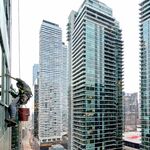Hub and spoke route models are notorious for being inefficient. The problem with them is that they require anywhere not travelling to the hub to either:
(A) Take a long detour to the hub, transfer vehicles, and continue to their destination, or
(B) Be forced to transfer vehicles elsewhere on the network, where they'd otherwise be able to travel straight, if not for the hub-and-spoke model. So, for example someone travelling on the 199 would need to transfer to another eastbound bus to travel anywhere east of McCowan Road.
However, what the TTC proposes for Scarborough isn't a true hub and spoke model, as the regular buses follow the grid network, and only the express buses use the hub-and-spoke






